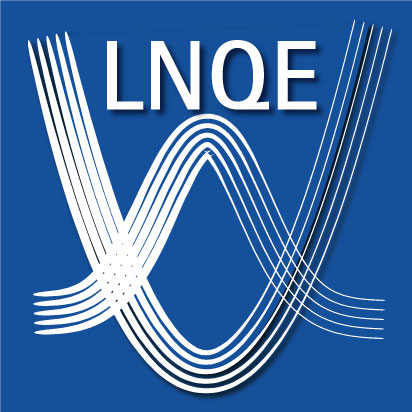Departamento de Física, Universidade Federal do Ceará, Caixa Postal 6030, 60455-900 Fortaleza, Ceará, Brazil
Ort: Hörsaal im LfI (Schneiderberg 32, Hannover, Deutschland)
Zeit: Mittwoch, den 25.02.2009 um 17:30 - 18:30 + anschließendes Beisammensein
Vortragsankündigung
Data operation in nanocrystal (NC) flash memories is achieved by controlling charge transfer between NCs embedded within the gate oxide and the channel of a metal-oxide-semiconductor field-effect transistor (MOSFET). The tunneling time of a single electron from the MOSFET channel into a NC is of the order of tens to hundreds of nanoseconds, while the NC discharging time (erase operation) is a few orders of magnitude faster, depending on the tunneling oxide thickness TOX. These times can be regarded as figures of merit of the overall device performance. The performance of NC flash memories can be engineered by optimizing parameters such as NC shape and size, TOX, and control oxide thickness. However, due to the intrinsic quantum mechanical behavior of the confined carriers, NC flash memories face two major limitations: (i) the reduced NC density of states (DOS) in comparison with the two dimensional electron gas DOS in the MOSFET channel poses a limit to the programming times, and (ii) good write performances and data retention cannot be obtained simultaneously because the tunneling probability from and into NC''s varies exponentially with TOX.
In this talk, I will review the basic properties of Si nanocrystals and discuss possible strategies to face these problems. A comparative study between electron- and hole-based data storage operations in Si1-xGex NC non-volatile memories is performed [1]. Due to an ideal band-edge alignment for holes storage, hole-based operation allows optimal data retention exhibiting very long retention times for x>0 regardless TOX. As for electrons, their retention times are always shorter than for holes, indicating that the data retention should be designed by controlling the TOX. The only disadvantage of the hole-based operation seems to be its slower programming in comparison to electrons, which can be enhanced by decreasing TOX without compromising data storage. I will also present a model device in which it is possible to achieve much faster programming performances for either electrons or holes by means of a light-induced mechanism that inverts the direction of charge transfer between nanocrystals and device substrate in comparison to conventional voltage-induced programming [2].
[1] J. S. de Sousa, V. N. Freire, and J.-P. Leburton, Appl. Phys. Lett. 90, 223504 (2007).
[2] J. S. de Sousa, G. A. Farias, and J.-P. Leburton, Appl. Phys. Lett. 92, 103508 (2008).








